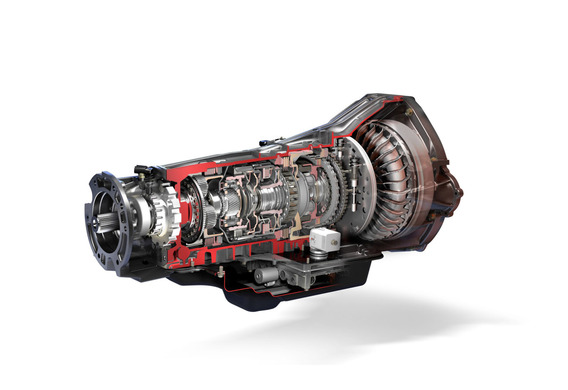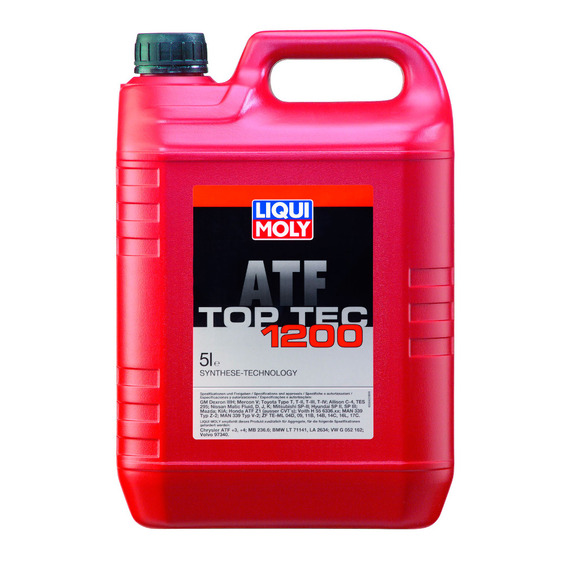
Complex Selection
The oil for ACPT on many vehicles is practically a cost. The usual cases are when the manufacturer recommends replacement of the liquid through every 50,000-60,000 tonnes. In km, indicating that this interval should be reduced by half under heavy conditions of operation. So it turns out that a lot of motorists are forced to ask a question every year: "Which liquid for the machine to pick?".
The choice, in fact, is to either make the expensive original liquid or the cheaper universal. Each of these options has its advantages and disadvantages. Therefore, in order to answer this question, it is necessary to first understand the specifics of the oils for the ACPR and the peculiarities of their work.
Why do you need butter in the ACPR?
The oil for automatic transmission boxes vary with the number of functions performed and should therefore meet many specific requirements. In this regard, the use of conventional motorized or transmissive oils for "machine guns" is strictly prohibited. Only special fluid called ATF (Automatic Transmission Fluid) can be poured into the ACPR.
ATF has increased viscosity requirements, oxidation stability, wear, and foam. This is connected with the fact that, unlike mechanical boxes, "machine guns" consist essentially of several different knots-hydro-converter, gearbox with jagged wheels and control systems. Only one ATF is used for efficient operation of all these nodes. The aidbone for ACPR performs such functions:
- Transfering energy in the hydraulic transformer (main difference from the ICIE);
- Tears of toothed gear;
- Warm water;
- Provision of friction properties for clutch;
- Ensuring quality gearshift
- The temperature will be -2 + 3 degrees.
It is always better to give preference to original ATF
To perform all this work, fluids for automatic transmissions have complex chemical composition-one of the most specific in automotive chemistry. The ATF consists of:
- Antioxidants;
- Corrosion inhibitors and inhibitors;
- Detergents
- Additives to ensure the necessary viscosity;
- Anti-semisable additive;
- Additives to prevent keepings of oil;
- Additives to prevent the swelling of seals;
- Frictions modifiers.
The complexity of the ATF makes it difficult to operate (high temperatures, heavy loads per car, towing, etc.) fluid is aging rapidly and is no longer performing its functions. Therefore, in such cases, it is desirable to change the ATF on a regular basis even on those boxes that are not serviced.

Is the ATF selection principle original or non-original?
The first thing to use when choosing ATF is the car manufacturer's recommendations. After all, liquid with certain properties was taken into account in the development of the transmission. The use of ATF with other features (even more modern) can seriously damage the ACPR. From this, at first glance, the conclusion is to be drawn-only original liquids are needed. But it's not that simple.
If a vehicle with an unaccepted ACPR is operated under difficult conditions, fluid needs to be modified from time to time
1) Original liquid for ACPR. It is an ATF that is released under the same brand as a car, for example, Toyota or Honda. Each automaker has its own marking and fluid clearance for the "machine". Most often, these tolerances are very close or identical. The most prominent are the tolerances of GM companies (DEXTRON II, DEXTON III, DEXTRON IV), Toyota (T, T-III, T-IV, WS) and Mitsubishi-Hyundai-Kia (SP-II, SP-III, SP-IV, Red-1). Advantages of this fluid for ACPR are several:
- It is 100% suitable for a specific car model.
- To use it, you don't need to know the characteristics of the ATF specifications-you simply need to buy what is written in the instructions.
- If the auto guarantee is automatic, only the original liquid should be used.
There is an original ATF and a number of shortcomings related mainly to the peculiarities of the Russian conditions:
- Its value is high enough;
- It is not always possible to find it in some regions;
- Sometimes the dubious origin of the "original" liquid;
In addition, it should be remembered that car manufacturers do not make oil and liquids on their own. This is done by the same companies that produce universal ATF (EM-Manufacturing). Very often under the branding brand, the exact same "non-original" liquid is hidden, only significantly more expensive.
(2) Universal liquid for ACPR. The Universal ATF is different in that it matches many tolerances of car manufacturers, which can be used in automatic boxes of different models. The advantages of universal fluids are:
- Possibility of selection among different manufacturers;
- Usually lower cost;
- The quality almost always corresponds to the original ATF.
Deficiencies in such fluids are also available:
- Need to determine whether the universal ATF is suitable for a particular ACPR (need to know tolerances);
- Warranty auto-removal
- Possible serious failure of the transmission in the event of improper selection of the liquid.
Finding the universal analogues of the original ATF is the easiest for cars of European production, as the antitrust legislation of Europe does not provide for the existence of "non-alternative" lubricants. The situation with Japanese machines is more complicated.
Summary
ACF requires a special ATF fluid that contains a large variety of additives. The jaweed need a periodic replacement, according to the instructions to the car. The liquid selection algorithm is as follows: Examine the manufacturer's recommendations-purchase the recommended ATF or a universal liquid that corresponds to the original tolerance. Each of these methods has its own advantages and disadvantages. The first is more reliable and cost-effective, the second is more economical and more fussing.







